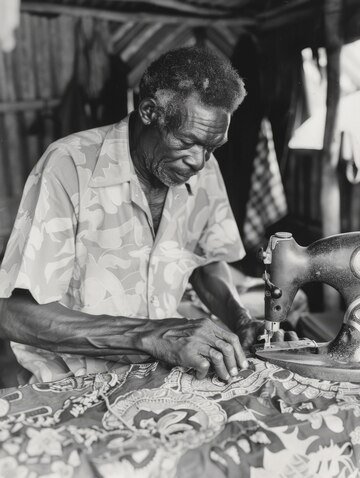Indian Handicrafts in Global Markets
Introduction :
In recent years, there has been a remarkable resurgence of interest in Indian handicrafts on a global scale. This revival not only celebrates the rich cultural heritage of India but also underscores the economic significance and sustainability of traditional crafts in today’s world market. This article explores the journey of Indian handicrafts from traditional practices to becoming a coveted trend in global markets.

Historical Significance of Indian Handicrafts
Ancient Roots and Cultural Heritage
Indian handicrafts have ancient origins spanning back thousands of years, with each region claiming its own unique craftsmanship influenced by local customs and resources. From elaborate textiles in Gujarat to beautiful metalwork in Rajasthan, these crafts represent India’s rich cultural tapestry.
Influence of Different Indian States
States like Uttar Pradesh, West Bengal, and Tamil Nadu are renowned for their distinct handicraft traditions, passed down through generations and ingrained in local identities.
Impact of Traditional Artisans
Artisans, often from marginalized communities, play a crucial role in preserving these traditions. Their skills are honed through years of apprenticeship, making each handmade piece a testament to craftsmanship and dedication.
Economic Impact of Indian Handicrafts

Contribution to Local Economies
Indian handicrafts contribute significantly to local economies by providing employment opportunities, especially in rural areas where alternative sources of income are limited.
Employment Opportunities
Artisan clusters, such as the weaving communities in Varanasi or pottery makers in Khurja, thrive on the economic support generated by global demand for their crafts.
Income Generation in Rural Areas
The income generated from handicrafts uplifts entire communities, empowering women and marginalized groups who are often the backbone of these industries.
Challenges Faced by Indian Handicrafts in Global Markets

Competition from Mass-Produced Goods
Despite their cultural appeal and craftsmanship, Indian handicrafts face stiff competition from mass-produced goods that flood global markets, often at lower prices.
Issues with Quality Control
Maintaining consistent quality standards is a challenge, as handmade goods vary in intricacy and finishing compared to machine-made products.
The Role of Technology in Reviving Indian Handicrafts
E-commerce Platforms and Global Reach
The advent of e-commerce has revolutionized the accessibility of Indian handicrafts, allowing artisans to showcase their products to a global audience without the constraints of physical stores.
Digital Marketing Strategies
Social media and online marketplaces enable artisans to tell their stories directly to consumers, fostering a deeper connection and appreciation for the craft.

Cultural Appreciation Versus Appropriation
Ethical Considerations in Global Trade
The growing global interest in Indian handicrafts raises questions about cultural appropriation and the ethical sourcing of traditional knowledge and designs.
Fair Trade Practices
Supporting fair trade ensures that artisans receive fair compensation for their labor while respecting the cultural context and heritage behind each craft.
Sustainable Practices in Indian Handicrafts
Environmental Benefits of Handmade Goods
Handcrafted products often utilize sustainable materials and techniques, reducing the carbon footprint associated with mass production.
Community Development Initiatives
Initiatives promoting sustainable practices not only safeguard the environment but also support community development by reinvesting profits into education and healthcare.
Case Studies of Successful Indian Handicraft Enterprises
Global Recognition and Awards
Several Indian handicraft enterprises have gained international acclaim for their commitment to quality, innovation, and social impact.
Impact on Local Communities
These success stories highlight how global recognition translates into improved livelihoods and pride within local communities, fostering a sense of cultural preservation and economic stability.

Future Trends in the Global Market for Indian Handicrafts

Emerging Markets and Consumer Preferences
As consumer preferences shift towards sustainable and unique products, Indian handicrafts are poised to capture a larger market share globally.
Innovation and Adaptation
Innovation in design and adaptation of traditional techniques to modern tastes will play a crucial role in sustaining the relevance of Indian handicrafts in the future global market.
Conclusion :
The rebirth of Indian handicrafts in global marketplaces is more than just a trend; it demonstrates the ongoing appeal of skill, culture, and sustainability. While we value these cultural assets, we must also secure their preservation for future generations, balancing economic viability with ethical considerations.
FAQs About Indian Handicrafts in Global Markets
Why are Indian handicrafts gaining popularity globally?
Indian handicrafts are valued for their unique craftsmanship, cultural richness, and sustainability, appealing to conscientious consumers worldwide.
What challenges do artisans face in exporting their crafts internationally?
Artisans often struggle with access to markets, competition from mass-produced goods, and maintaining consistent quality standards required for global trade.
How can consumers support the ethical sourcing of Indian handicrafts?
By purchasing from certified fair trade organizations and learning about the cultural significance behind each piece, consumers can ensure their purchases contribute positively to artisan communities.
What role does technology play in the revival of Indian handicrafts?
Technology, especially e-commerce and digital marketing, has expanded the reach of Indian handicrafts, connecting artisans directly with global consumers and preserving traditional knowledge.
What are some upcoming trends in the global market for Indian handicrafts?
Trends include a growing preference for sustainable products, innovative adaptations of traditional designs, and increased consumer appreciation for the stories behind handmade goods.



